Topic: Real Estate
WeWork cofounder Adam Neumann’s new real estate startup sounds an awful lot like one he invested in two years ago
U.S. mortgage lenders are starting to go broke
US Mortgage Lenders Are Starting to Go Broke
San Francisco ‘froth is gone’ as wealth fades, housing slumps
Will layoff fears end the remote work era?
The housing market amid recession fears: Should you buy now or wait?
Housing inflation storm: When will prices calm down?
Hot and Bothered
Insurance pricing fails to account for growing wildfire risk
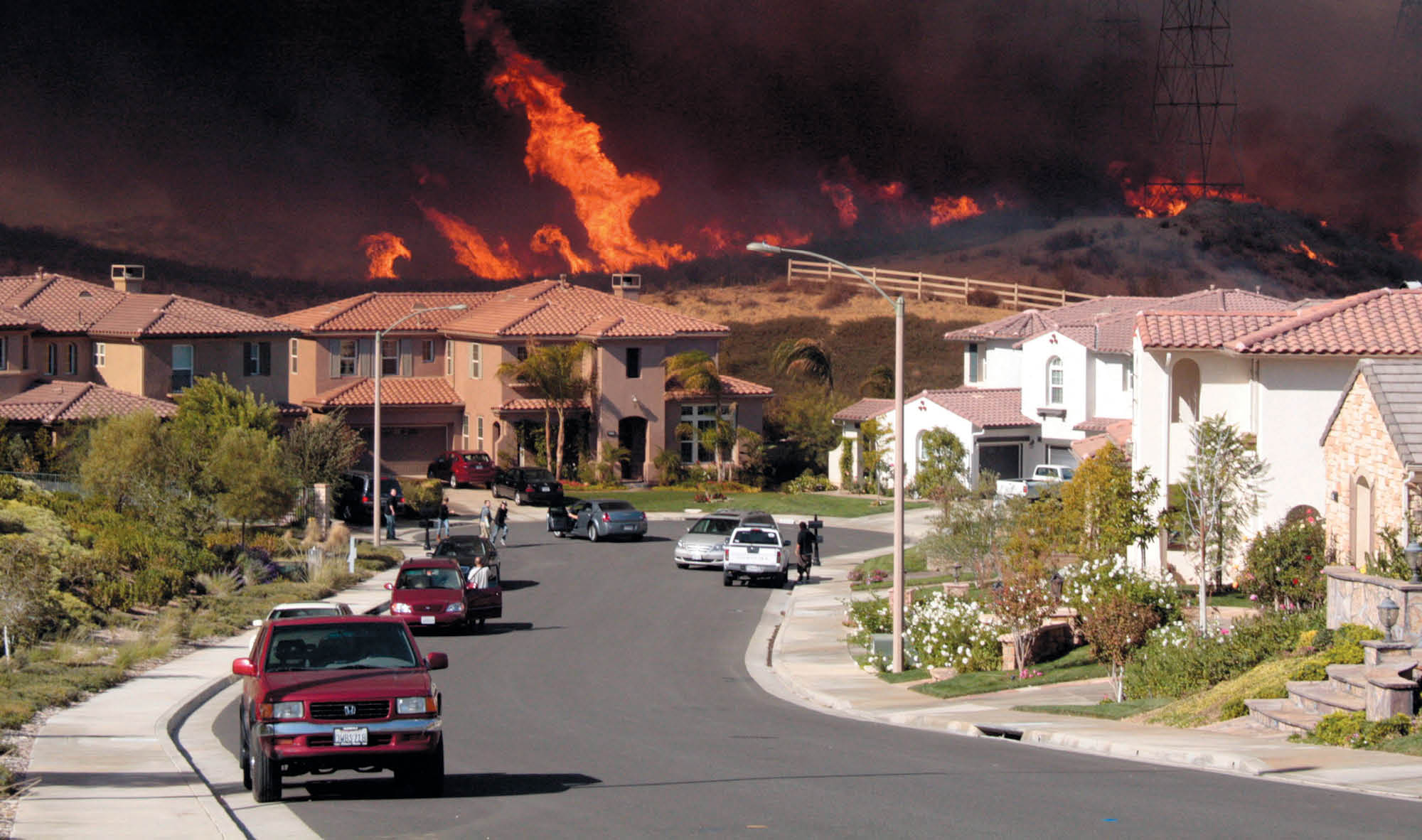
Wildfires are blazing a climate-change-driven path of destruction across California. Areas in the state scorched by wildfires increased fivefold from 1979 to 2019. The following year, the burn area more than doubled.
A team of Berkeley Haas researchers warn that despite this upward trajectory, the risks posed by wildfires are worse than we—or, at least, the insurance and mortgage markets—are willing to account for.
An analysis by Professors Nancy Wallace, the Lisle and Roslyn Payne Chair in Real Estate and Capital Markets, and Richard Stanton, the Kingsford Capital Management Chair in Business, along with two alumni suggests that financial firms whose insurance products help protect homeowners from the financial devastation of fires could soon find their own businesses financially wrecked, unless their risk models and pricing (and the government regulations overseeing both) undergo dramatic changes.
Mapping dynamic risks
Wallace and Stanton, along with Paulo Issler, MBA 98, PhD 13, director of the Haas Real Estate and Financial Markets Lab, and Carles Vergara-Alert, MFE 04, PhD 08, of Spain’s IESE Business School, teamed up with physicists from the Lawrence Berkeley National Laboratory who study the fluid dynamics of fire. They linked the physicists’ sophisticated measurement models to the comprehensive Fisher Center for Real Estate and Urban Economics’ real estate and mortgage-record data. This allowed them to forecast the risks posed by wildfires to lenders and insurers in California.
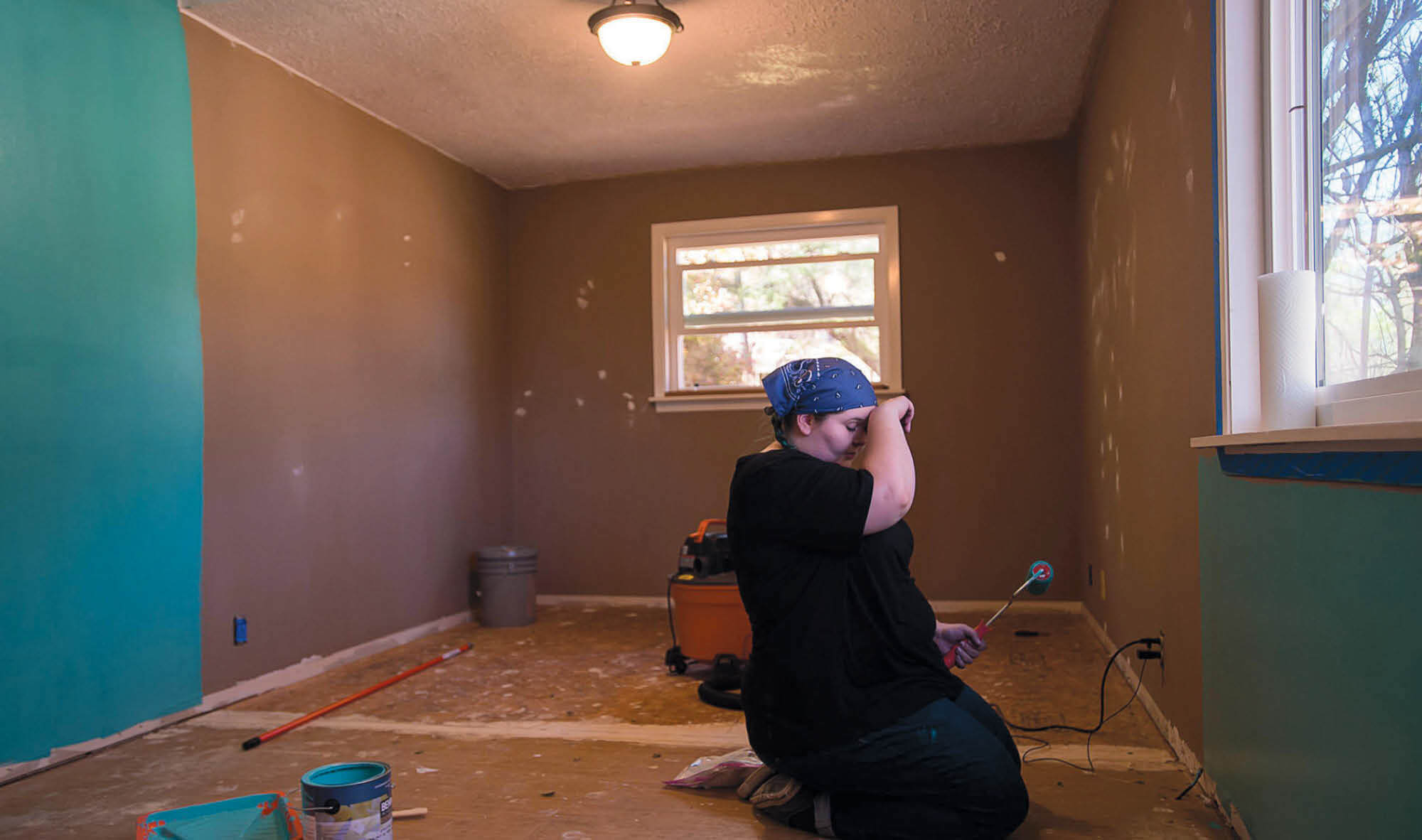
Unlike the static maps typically used by researchers, the granular, digitized measurements developed by the LBNL physicists are based on dynamic hourly data. They incorporate the locations of thousands of California wildfires between 2000 and 2015 as well as meteorological factors: wind direction and speed, humidity levels, and temperatures. The Haas team also considered a location’s slope, elevation, and vegetative density.
The researchers found that their site-specific estimates of wildfire risk were quite different from the risk maps developed by the California Department of Insurance (CDI). This difference was most pronounced in the zones marked “zero-risk” on the state’s maps, because the researchers found that there was, indeed, some level of risk in many of those places.
They also show that neighborhoods damaged by wildfires tend to return as more gentrified versions of themselves—populated by larger and more expensive homes and residents with higher wealth than those outside the burn area. That’s because the insurance industry incentivizes bigger and more expensive rebuilds.
But the system is not sustainable.
From deterministic to probabilistic
In the past three years, there’s been a 31% increase in policy cancellations, Stanton says, and in 2020 and 2021, California insurers lost nearly two years of premia. “They can’t sustain providing insurance in this state unless there’s a policy response,” he says.
The problem, the researchers argue, is that the insurers are relying on deterministic models of wildfire risk, based on where fires have happened, rather than probabilistic models that predict fires. The insurers have no choice—the CDI requires them to price based on deterministic maps. The researchers argue that the CDI policy needs to change.
California regulators also prohibit insurers from using reinsurance margins, which is insurance to cover extreme events, in the rate structure. In recent years, insurers offering financial protection from hurricanes and earthquakes have been relying on the reinsurance market. Introducing reinsurance would likely raise customers’ premia, so the researchers propose that the solution could involve subsidies for people who can’t afford the price hikes. The new structure should also shift the current incentives.
“If insurance products really reflected the risk, it would be much more costly, and homebuyers would have a decision to make,” Wallace says. “‘Do I want this home enough to pay these premia and take this risk with my life?’ Right now, the real risk isn’t priced in accurately enough for people to understand what their exposures are.”
FLAT: the real estate startup-meet Victor Noguera
Why mounting tech layoffs threaten the broader Bay Area economy
Here’s how a recession could change San Francisco
Insurers aren’t pricing the real risk of wildfires in California, study finds
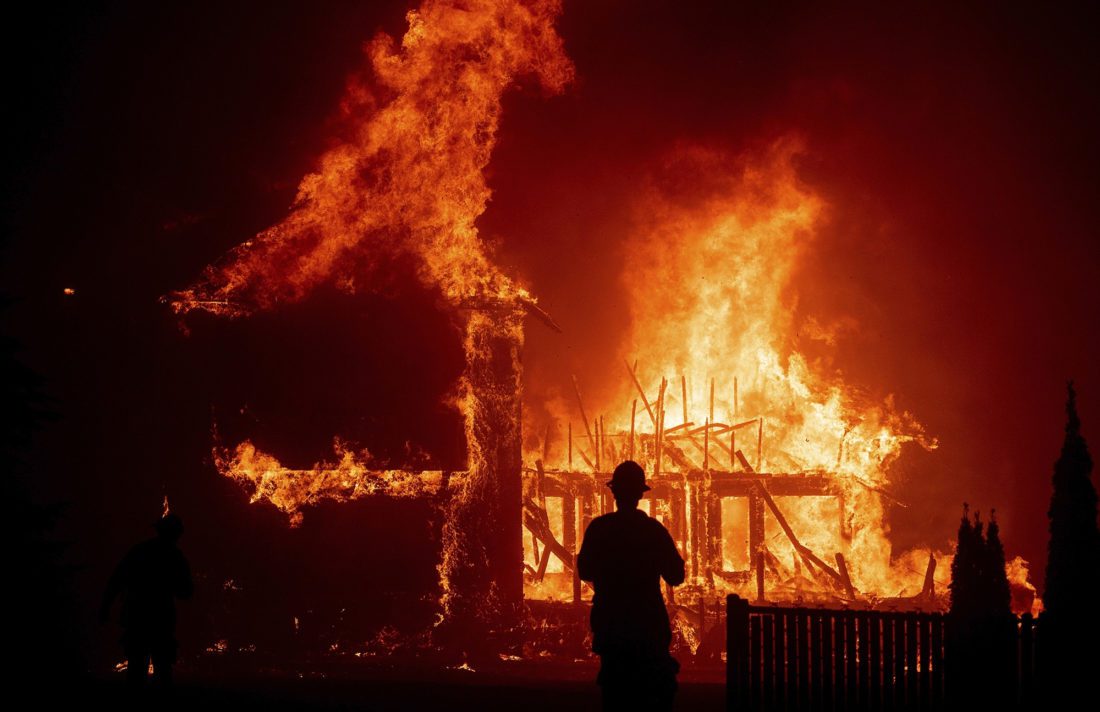
The historic drought and warmer temperatures are stoking fears of an early wildfire season. Areas in the state scorched by wildfires increased fivefold from 1979 to 2019. The following year, the burn area more than doubled.
And a new United Nations report warns of a “global wildfire crisis” and predicts that extreme wildfires could increase by 57% by the end of the century.
With fire comes the threat of property loss for homeowners.
A team of Berkeley Haas researchers warn that despite this clear upward trajectory, the risks posed by wildfires are worse than we—or, at least, the insurance and mortgage markets— are willing to account for.
An analysis by Professors Nancy Wallace and Richard Stanton, along with two PhD alumni, suggests the financial firms whose insurance products help protect homeowners from the financial devastation of fires could soon find their own businesses financially wrecked, unless their risk models and pricing (and the government regulations overseeing both) undergo dramatic changes.
“We have a problem, and the political will to deal with this is not even trying to catch up with the speed of the rapidly changing risks,” says Wallace, the Lisle and Roslyn Payne Chair in Real Estate and Capital Markets, chair of the Berkeley Haas Real Estate Group, and co-chair of the Fisher Center for Real Estate and Urban Economics.
Wallace and Stanton, along with Paulo Issler, PhD 13, MBA 98, director of the Haas Real Estate & Financial Markets Lab, and Carles Vergara-Alert, MFE 04, PhD 08, now a professor at Spain’s IESE Business School, teamed up with physicists from the Lawrence Berkeley National Laboratory (LBNL) who study the fluid dynamics of fire. In a unique collaboration, they linked the physicists’ sophisticated measurement models—using satellite and radar data—to the comprehensive Fisher Center for Real Estate and Urban Economics’ real estate and mortgage-record data. This allowed them to forecast the risks posed by wildfires to lenders and insurers in California.
The researchers found that their site-specific estimates of wildfire risk in the state were quite different from the risk maps developed by the California Department of Insurance. This difference was most pronounced in the zones marked “zero-risk” on the state’s maps, because the researchers found that there was some level of risk in many of those places.
Separately, the researchers found that neighborhoods damaged by wildfires tend to return as gentrified—populated by larger and more expensive homes and residents with higher wealth than those outside of the burn area. That’s because the insurance industry incentivizes bigger and more expensive rebuilds, they noted.
But the system is not sustainable.
Mapping dynamic risks
As economists focused on the mortgage market, Wallace says the researchers are accustomed to working with static maps, which are “imperfect measures of the physical space because they’re so infrequently updated.”
The granular, digitized measurements over a 1.5-by-1.5 kilometer grid developed by the LBNL physicists are, on the other hand, based on dynamic hourly data. They incorporate information about the locations of thousands of California wildfires between 2000 and 2015, as well as meteorological factors including direction and speed of wind, humidity levels, and temperatures. The Haas team also considered a location’s slope, elevation, and vegetative density.
The Haas team mapped the owner-occupied, single-family residences included in a database that covers properties in California between 2000 and 2018. Their dataset included information about each property’s size and price, as well as household characteristics like wealth, income, and mortgage performance.
Building back bigger
The models they developed suggest that wildfire risk in California is more dispersed than the state’s static maps suggest. In fact, they found that important risks to housing stock falls into what the state labels as “zero-risk” zones which contain large numbers of single-family homes. In contrast, their predictive models estimate there is some risk of wildfire in most of these areas.
They also show that five years after a fire, the rebuilt houses are larger and more expensive than those outside of the burn area. Five years later, the houses in the post-fire areas have 3.4% higher prices and are larger than those outside the burn area. This is partly because new homes are required to be built to code, which often means improvements in safety and quality over the previous housing stock. Insurance payouts enable owners to invest heavily in a rebuild, and because everyone in the area is doing the same thing, the whole area increases in value.
Of course, these incentives rely on the existence of a healthy property insurance industry. And that, the researchers say, may be threatened by the patterns highlighted by their predictive models.
From deterministic to probabilistic
Insurers are canceling policies at a growing clip. In the past three years, there’s been a 31% increase in policy cancellations, Stanton says. In 2020 and 2021, he adds, California insurers lost nearly two years of premia. “They can’t sustain providing insurance in this state unless there’s a policy response,” he says.
The problem, the researchers argue, is that the insurers are relying on deterministic models of wildfire risk, based on where fires have happened, rather than probabilistic models that predict incidence of fires. The insurers have no choice—the California Department of Insurance (CDI) requires them to price based on deterministic maps. The researchers argue that the CDI policy needs to change so insurers can base their risk and pricing on probabilistic models.
California regulators also prohibit insurers from using reinsurance margins in the rate structure, which is insurance to cover tail risks—in other words, extreme events. In recent years insurers that offer financial protection from hurricanes and earthquakes have been relying on the reinsurance market. Introducing reinsurance would likely raise customers’ premia, so the researchers propose that the solution could involve subsidies for people who can’t afford the price hikes. The new structure should also shift the current incentives.
“If insurance products really reflected the risk, it would be much more costly, and homebuyers would have a decision to make,” Wallace says. “‘Do I want this home enough to pay these premia, and to take this risk with my life?’ Right now, the real risk isn’t priced in accurately enough for people to understand what their exposures are.”
Wallace has personal experience with those trade-offs: She was one of thousands of people who fled the 1991 Oakland Hills Firestorm 30 years ago, which killed 25 people, injured about 150, and burned 2,900 homes.
As climate change continues to take its toll, the structure of the insurance market will have to change. That may mean a shift from today’s indemnified insurance, which carefully covers losses, to what’s called parametric insurance, which pays out based on the occurrence and magnitude of a specific weather event.
UC Berkeley real estate programs among national leaders
The real estate evangelist — why buy one home when you can buy 100?
Chair Lift
New Chancellor’s Chair celebrates Ken Rosen
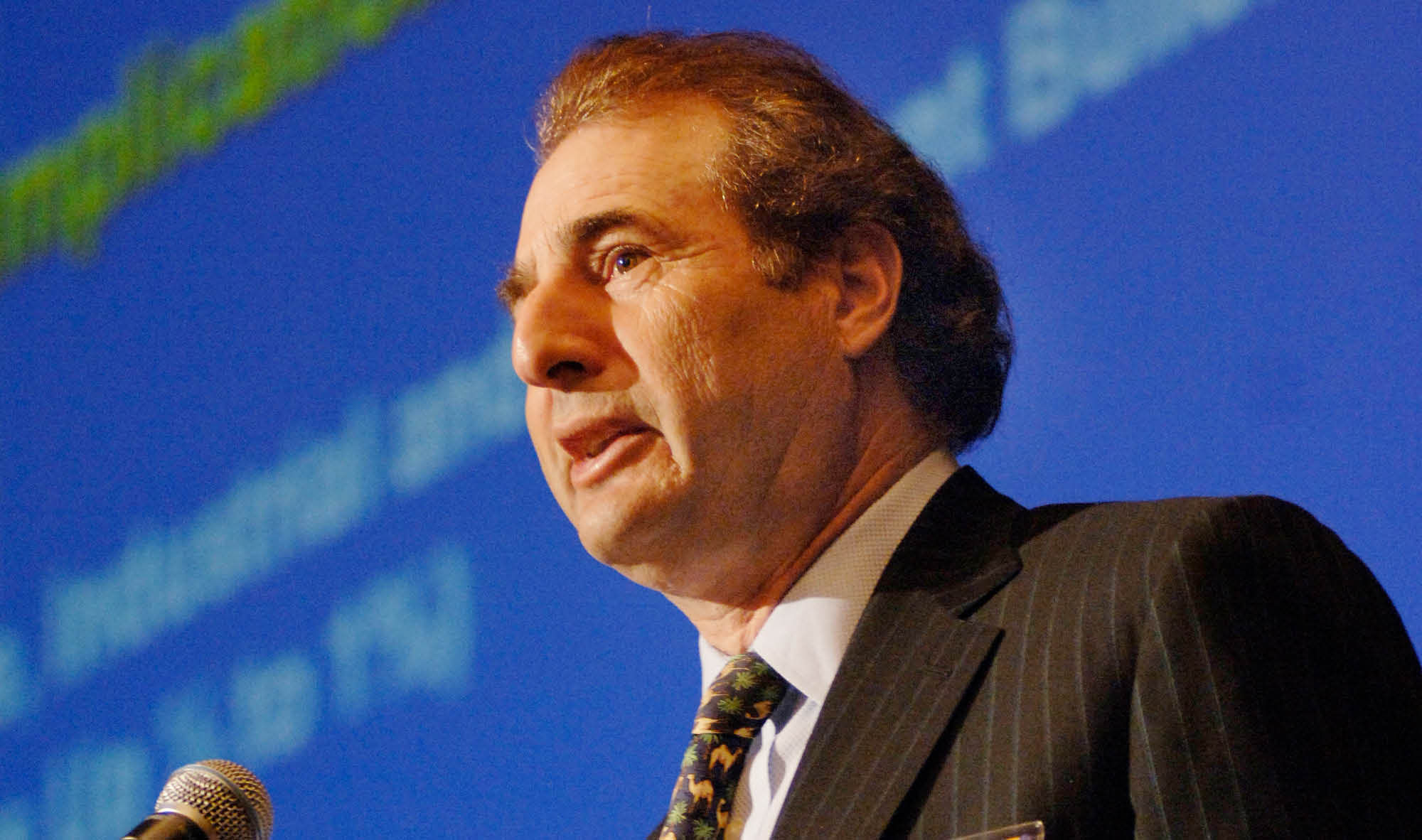
Anyone familiar with Haas’ real estate program knows the name Kenneth Rosen. A professor emeritus and chairman of real estate market research firm Rosen Consulting Group, he’s revered for his long-running real estate and economic forecasts. He’s also chairman of the Fisher Center for Real Estate & Urban Economics and is directly responsible for the Center’s revitalization starting in the ’80s—which led to Haas’ recognition today as one of the nation’s leading real estate programs.
To honor Rosen’s immeasurable legacy—and to maintain the program’s strong reputation—a group of donors has given $1 million each to establish the Kenneth T. Rosen Chancellor’s Chair in Real Estate.
The Chancellor’s Chair represents a new model for UC Berkeley, one designed both to retain outstanding faculty and to attract new talent. Part of the money will support a professor’s research, teaching, and academic initiatives. The remaining money will fund a new full-time real estate faculty member.
Donor Kevin Shields, BS 82, MBA/JD 85, attests to the importance of faculty in drawing students. “The reason I decided to get an MBA was the opportunity to study under Ken,” says Shields, chairman and CEO of Griffin Capital. “He became my mentor and had a profound effect on the trajectory of my career.”
Lecturer Bill Falik, also a donor to the Chair, illustrates the investment faculty make in the success of students. Under his tutelage, Haas teams have won three of the last four UT Austin Real Estate Challenges—a premier case-based competition for 20 top-ranked business schools—despite having a smaller faculty than virtually all the competitor schools. “Haas could well have the best real estate training of any business school in the country,” he says. “Hiring additional faculty would help continue that success.”
The Fisher Center was one of the first real estate and urban economics programs nationwide when founded in 1948 by Paul Wendt and Sherman Maisel. Maisel hired Rosen in 1979, who in turn expanded the Center by hiring the late professor Dwight Jaffee and professors Bob Edelstein and Nancy Wallace.
The Chair will also support the innovation that’s a hallmark of the program. The real estate curriculum, for example, has recently been reshaped to focus on sustainability amid climate change.
The donors to the Chair have all been involved with the Policy Advisory Board, a group of academics, policy makers, and business leaders Rosen established to transform real estate at Haas into an interdisciplinary center not reliant on state funding. Their willingness to establish the Chair reflects the strong alliances Rosen created in service to real estate at Haas.
The donors include: Shields and his wife, Eileen; Falik and his wife, Diana Cohen; George and Judy Marcus; Ken and Donna Coit; the Fisher Family in honor of Don, BS 50, and Doris Fisher; Dan, BA 89 (political science), and Jaclyn Safier; and an anonymous donor.
Home Economics
Why Black and Latino homeowners profit less than whites
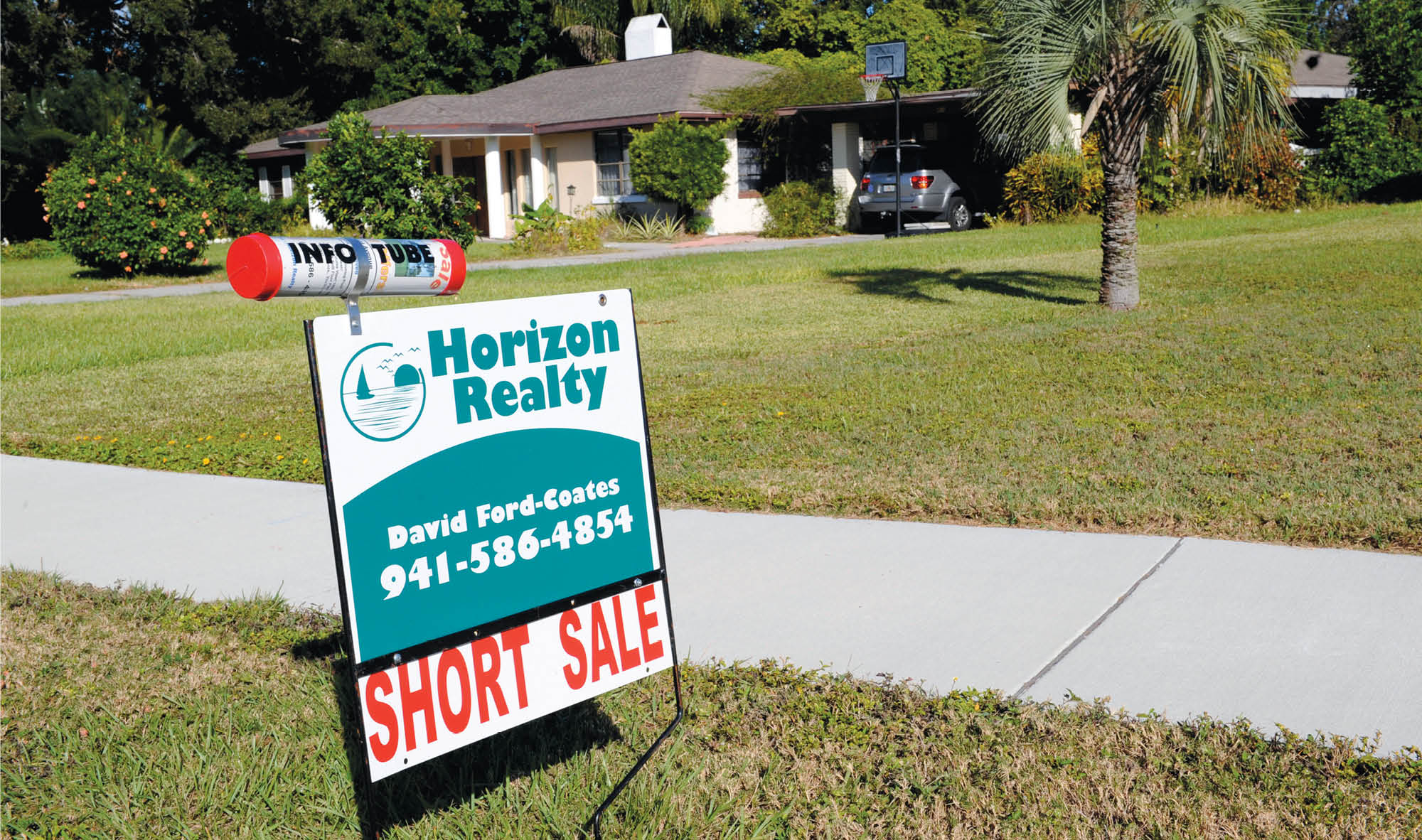
In the U.S., Black home ownership rates doubled from about 23% in 1920 to 45% in 2021. Yet the median white U.S. household still holds about 10 times the wealth of the median Black household, and this massive wealth gap has barely budged.
Associate Professor Amir Kermani and a colleague analyzed massive datasets capturing 6 million home ownership spells from 1990 to 2017 to better understand why the wealth gap is so persistent.
They found that Black and Latino homeowners across all income levels make significantly lower returns on owning a home than whites, on average: 44% and 22% lower, respectively, when compounding the average of all types of sales over ten years. But surprisingly, it’s not because of differences in prices or appreciation rates in their neighborhoods.
In fact, when it comes to regular home sales, minority sellers profit about as much on average as whites—regardless of the racial makeup of the neighborhood. Almost all of the disparity is driven by higher rates of distressed sales among Blacks and Latinos, which wipe out a huge chunk of potential wealth and drive down average returns.
Minority homeowners are 5% more likely to experience a distressed sale—which includes foreclosures and short sales, where a lender forces a sale for the mortgage balance. They are also more likely to live in neighborhoods where forced sales carry a steeper price discount, probably because there are fewer buyers, Kermani says.
“Higher job instability and fewer liquid assets make people very vulnerable to a temporary shock and increase the chances of losing all the wealth they’ve accumulated in their house.”
“If we could equalize the rate of return on homeownership for Blacks and whites—without any increase in home ownership—we would reduce the Black/white housing wealth gap by about 40% at retirement,” says Kermani. “If we were able to equalize both home purchases and the rate of return on ownership, we’d reduce the gap by 50%.”
But why are those in minority groups more likely to lose their homes in forced sales? The study identifies deep-seated disparities in liquid wealth, especially after age 50, and job instability as the culprits. Blacks and Latinos are much more likely to lose their jobs than whites—across all sectors, education levels, geographic locations, and income levels.
“Even Black households with income over $100,000 are still about 5% more likely to experience a layoff,” Kermani says. “Higher job instability and fewer liquid assets make people very vulnerable to a temporary shock and increase the chances of losing all the wealth they’ve accumulated in their house.”
The main problem seems to be rooted in the labor market, and the main fix is to create more stable jobs and ways to build liquid assets, says Kermani. “But in the short term, one solution is more flexible mortgage contracts and more mortgage modifications,” he says.
He estimates that receiving a modification after three months of failing to make mortgage payments can reduce chances of a foreclosure by 37 percentage points and increase a homeowner’s average annual returns by nearly 9 percentage points.
Noni Ramos, BS 90
CEO, Housing Trust Silicon Valley
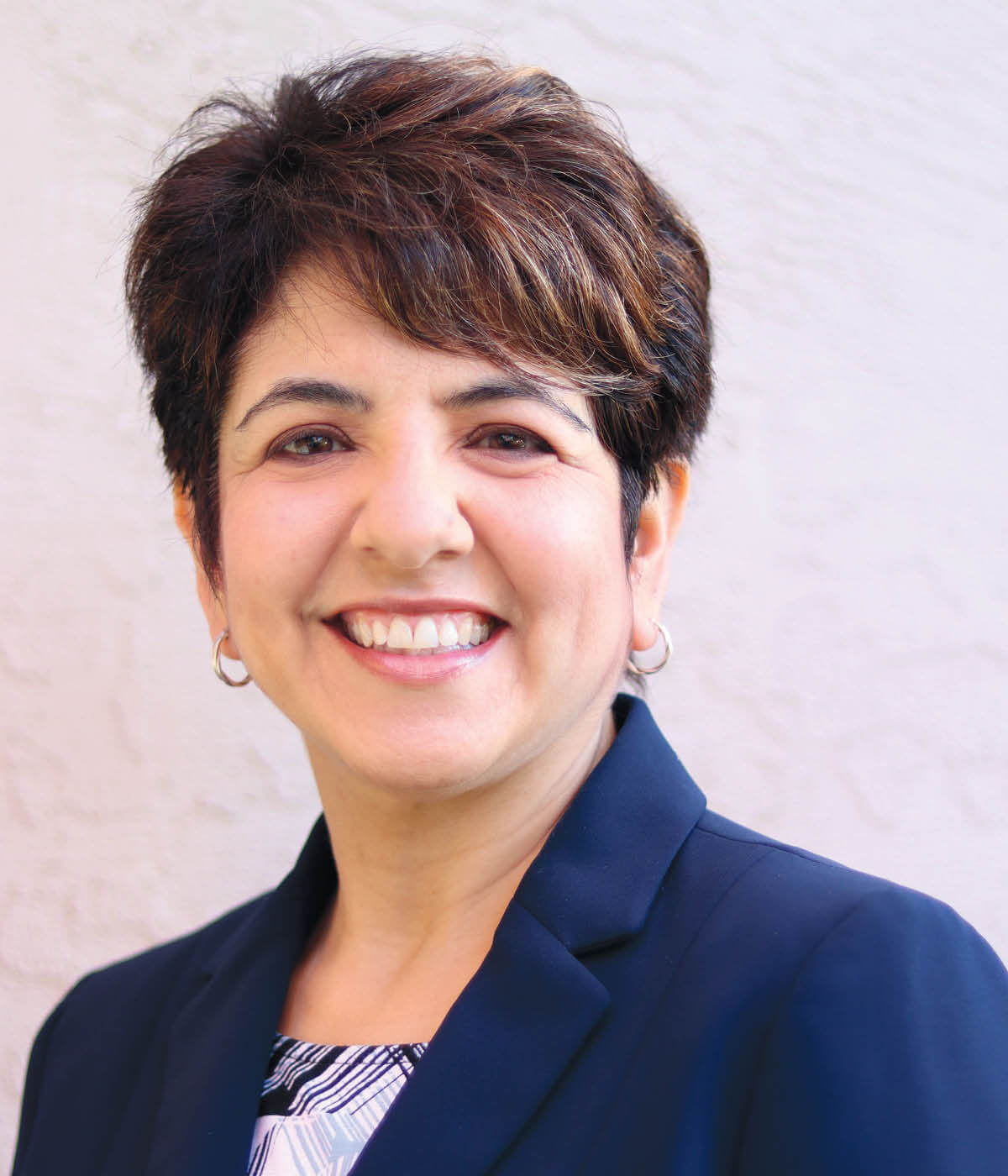 Noni Ramos may be a relatively new CEO, but she’s a seasoned professional in the affordable housing field.
Noni Ramos may be a relatively new CEO, but she’s a seasoned professional in the affordable housing field.
Having spent almost three decades working nationally to combat the housing crisis, she now focuses on the Bay Area’s thirteen counties as head of Housing Trust Silicon Valley, where she endeavors to keep people in their homes, add more housing, and ensure available housing is affordable.
A Bay Area native, it’s a role with particular personal resonance. “I grew up in affordable housing,” Ramos says. “I have firsthand experience of the life-altering impact that can have not only on an individual but on generations to come. My children have the life and the opportunities they have because I had those opportunities.”
Ramos, a woman of color and first-generation college graduate, also understands the diversity and interconnectivity of local communities. This perspective motivates her collaboration with private organizations and the public sector to create programs that span the Bay Area’s income gamut. “We need housing for all income levels, of all types,” she says. “And we need that housing to be built in different places, not just in one part of the community.”
She explains how connecting residents to other support services, like Spanish-language materials and mental health and medical resources, is paramount to fully include, support, and develop communities—a fact made especially clear during the pandemic.
It’s work that Ramos approaches with a strong sense of responsibility. “I hope to be a role model in ways that other folks were role models for me and supported me,” she says.
Types of MBA specializations explained
Haas MBA students win UNC Real Estate Development Challenge
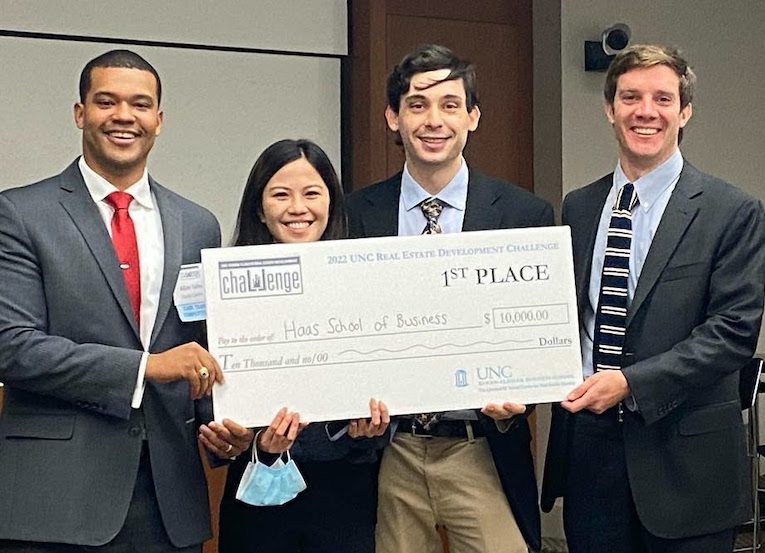
A team of Berkeley Haas MBA students won the 2022 University of North Carolina Kenan-Flagler Business School Real Estate Development Challenge for a plan to transform part of an historic Washington D.C. neighborhood.
“It’s great to bring this home for Haas and for Berkeley,” said Timothy Werby, MBA/JD 22, whose teammates included Vicky Li, Alijah Talley, and Santiago Recabarren, all MBA 23. Haas last won the competition in 2011.
The UNC Real Estate Development Challenge,hosted annually by the Leonard W. Wood Center for Real Estate Studies at Kenan-Flagler, convened 12 teams from the country’s top MBA programs on February 18.
This year, the teams had to plan, design, model financials, and create an investor presentation for development of a 9.25-acre site in Washington D.C.’s Anacostia neighborhood, south of the U.S. Capitol Building. To be successful, plans had to incorporate “the highest level of sustainability, embrace the surrounding neighborhoods, and deliver attractive risk-adjusted returns to investors.”
Focused on the community
Split across four presentation rooms, each team presented to a group of local real estate experts in 20-minute rounds, followed by five minutes of questions from the judges. Four finalists were then selected to present again in front of all of the judges, UNC students, and other competitors.
The Haas team’s presentation was designed thematically around the Nacotchtank, or Anacostans, an Algonquian-speaking, indigenous people who lived along the southeast side of the Anacostia River. Their design included a circular plaza to host pop-up farmer’s markets, an outdoor event space to be called the Frederick Douglass Pavilion, a new neighborhood grocery store, renovated school space, and a jazz stage that could be used for outdoor block parties and community events.
The team also pushed to include new multi-family housing and additional community spaces in future phases, including 43% more affordable housing units than was required.
“We all had our superpower”
Recabarren said the team excelled in part because it covered the project’s central issues comprehensively.
“We decided to pay more attention to the conceptual aspects of the project, which we defined as the four core values of our development: honoring local culture, health and wellness, sustainability, equity and inclusion,” he said.
The team had just four days to develop the whole project. “We were very fortunate to have Tim, who had a lot of experience in these competitions,” Recabarren said. “He convinced us on where and how we should use our resources.”
Talley said the team’s power was in its diversity, which enabled team members to tap into each of their strengths.
“Each of my teammates have different professional backgrounds, varied levels of real estate experience, and different lived experiences,” he said. “I think that we all had our own superpower and something tangible to bring to the table.”
Finally, Li said that the team was highly motivated to “do what it takes to take home the grand prize.
Vanderbilt’s Owen Graduate School of Management took second place while Rice University’s Business School and Dartmouth’s Tuck School of Business tied for third place.